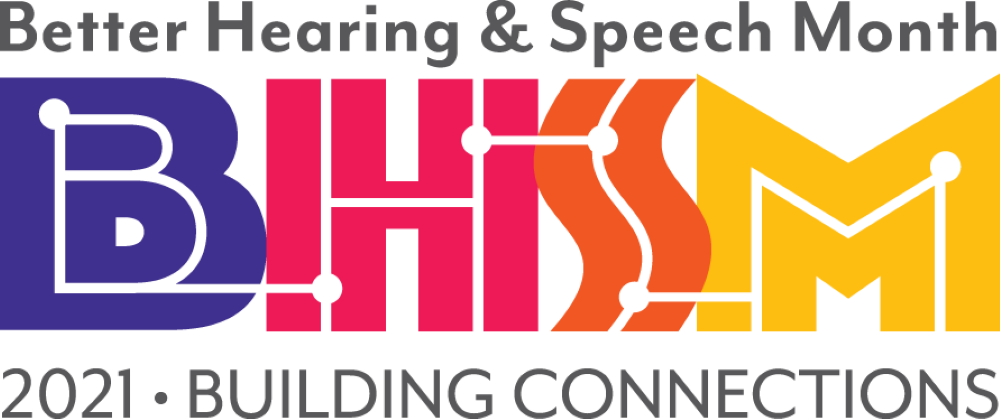The month of May means one thing to us here at the ASHA Journals: Better Hearing & Speech Month (BHSM)! This year, the theme is “Building Connections.” We ask researchers, practitioners, and readers to help us raise awareness about communication disorders and the role that ASHA members play in providing life-altering treatment, particularly during the COVID-19 pandemic.
Week 1’s theme is “Lessons Learned on Hearing Loss: Turning Pandemic Realities Into Action on Hearing Health.” During the COVID-19 pandemic, many adults have been unable to meet with their audiologist in person, and the care burden may have shifted to their communication partners—friends and loved ones they talk with regularly. The articles highlighted below focus on not only providing audiology care via telepractice but also the role that communication partners play for people with impaired hearing.
ASHA Journals Resources
Survey of Hearing Health During the COVID-19 Pandemic: Implications for Service Delivery: A survey of 150 older adults found a number of themes applicable to audiologists working with this population. Even though few had sought telepractice for hearing health, 90% reported using some kind of video-conferencing software. By alerting people with hearing loss and their communication partners about the possibilities of telehealth, we can better maintain and protect the hearing of adults who do and do not use hearing aids.
Remote Assessment of Verbal Memory in Youth With Cochlear Implants During the COVID-19 Pandemic: Although advances in cochlear implants have allowed deaf children to hear and develop vocabulary, the increased listening effort, as well as other factors, can negatively affect verbal memory. Authors of this article found that tele-assessment of verbal memory was possible for this group, while also discussing the role that human factors and environmental issues play in assessment.
Hearing Aid Amplification Reduces Communication Effort of People With Hearing Impairment and Their Conversation Partners: This article emphasizes the importance of hearing aid usage to not only people with hearing impairment but also their communication partners. By highlighting the benefits of hearing aid amplification to all parties, we can show potential users the full benefits of a hearing aid fitting.
The Development of an Internet-Based Decision Coaching Guide to Encourage Audiology Care: The Results of a Participatory Design Approach: Of the 40 million adults who report some level of hearing difficulty, less than 30% have sought a hearing evaluation. This article describes a program after a hearing screening failing, including involving a communication partner to promote hearing aid uptake.
Other ASHA Resources
Although many children around the world have already started returning to in-person schooling, maintaining hearing health care at home is still important. This guide from ASHA gives practical, daily tips on maintaining hearing devices to improve communication at home.
Another guide from ASHA is COVID-19 and Hearing Loss in Adults: Strategies at Home. Alongside hearing aid maintenance, this short guide also provides tips on improving your listening at home as well as what to do if you notice hearing loss in the people you live with.
We’ve all learned a lot during the COVID-19 pandemic—and we’ve all felt it as this pandemic disrupted our normal lives, both at home and at work. Audiologists and speech-language pathologists have quickly had to transition to telepractice and other technological solutions. Those with hearing difficulties and their conversation partners have had to find new ways to manage hearing loss and communicate with each other.
During this BHSM, we hope you take the opportunity to reflect on the importance of building connections to help people with hearing and speech issues during the COVID-19 pandemic and beyond. You can learn more about BHSM, including plenty of resources and social media tools, on ASHA’s BHSM home page.









